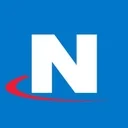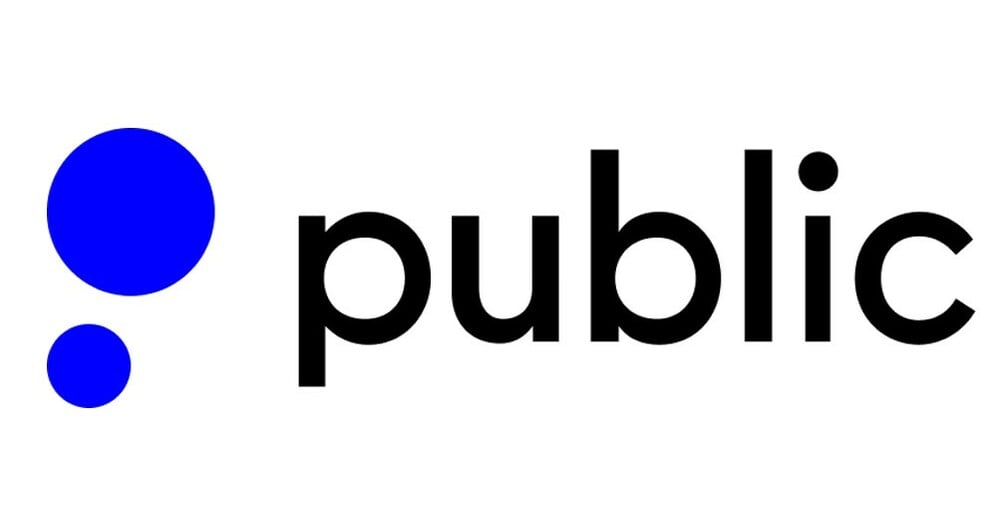Stock Market Outlook: July 2025
In this month's stock market outlook: How Trump accounts stack up to existing investment accounts for kids. Plus: Lazy portfolios fit for any financial goal, Fed meetings, GDP releases, blue-chip earnings and more.

Many, or all, of the products featured on this page are from our advertising partners who compensate us when you take certain actions on our website or click to take an action on their website. However, this does not influence our evaluations. Our opinions are our own. Here is a list of our partners and here's how we make money.
The investing information provided on this page is for educational purposes only. NerdWallet, Inc. does not offer advisory or brokerage services, nor does it recommend or advise investors to buy or sell particular stocks, securities or other investments.
In this issue:
How do “Trump accounts” compare to other investment accounts for kids?
On July 4, President Trump signed the One Big Beautiful Bill Act, a sweeping budget reconciliation bill, into law.
The new law has many provisions, including extending the 2017 tax cuts and reducing spending on social programs such as Medicaid and SNAP.
It would also create a new type of investment account for children, dubbed “Trump accounts,” and seed each one with a $1,000 contribution from the federal government.
» Trump accounts vs. other investment accounts for kids: $1K ‘Trump Accounts’ for Kids: How Do They Stack Up?
Term of the month: Lazy portfolios
Some of the accounts discussed above require the accountholder to choose their own investments. If you’re looking for a simple investment strategy for such an account, so-called “lazy portfolios” may be an appealing option.
These consist of just a few widely-diversified mutual funds or exchange-traded funds. Here’s an overview of some common lazy portfolios.
One-fund portfolios (target date funds)
The laziest of lazy portfolios only contain a single mutual fund or ETF: a target date fund. These funds contain a diversified mix of stocks and bonds that automatically changes over time.
Many mutual fund custodians, such as Vanguard and Fidelity, offer target date mutual funds that are widely available in 401(k) plans, IRAs and other tax-advantaged accounts. If you’re investing through a brokerage account that doesn’t offer mutual funds, there are also target date ETFs available, such as the iShares LifePath series.
Typically, target date fund issuers offer a variety of funds that are labeled with target retirement years, often spaced out in five-year increments. For example, the iShares LifePath Target Date 2070 ETF (ITDJ) is intended for young workers who intend to retire around 2070. The LifePath Target Date 2045 ETF (ITDE) is for mid-career workers who want to retire around 2045, and the LifePath Target Date 2030 ETF (ITDB) is for workers on the cusp of retirement.
These funds tend to invest heavily in stocks (with a small bond allocation) when they are decades away from their target date in order to maximize growth, and automatically become more conservative (mostly bonds with a small stock allocation) as that target date approaches. If you’re investing for a non-retirement goal, such as future college expenses for a newborn, you could choose a fund with a target “retirement year” that corresponds to the child’s 18th birthday.
According to Morningstar, the average expense ratio of target date funds reached a new low of 0.29% in 2024. That’s not bad, but the fees can be even lower if you build a two- or three-fund portfolio of index funds and manage them yourself.
Two-fund portfolios
A two-fund portfolio consists of a diversified stock market index fund and a diversified bond market index fund.
These could be global index funds, such as the Vanguard Total World Stock ETF (VT) and the Fidelity Total Bond ETF (FBND), or they could be U.S.-focused index funds such as an S&P 500 ETF and a short-term U.S. Treasury ETF.
Initially, a two-fund portfolio should consist mostly of the stock fund — say, 80% stock fund, 20% bond fund — but over time, it should gradually shift toward bonds as you near retirement (or whatever your financial goal is).
Opinions vary about the right “ending allocation” of a two-fund portfolio; 80% bonds and 20% stocks or 60% bonds and 40% stocks are both possible answers. It depends on what level of risk you’re willing to tolerate at the end of your investment journey.
Three-fund portfolios
Many two-fund portfolios just consist of a U.S. stock index fund and a U.S. bond index fund. That’s enough for many investors, but it runs the risk of missing out on international stock returns. In the last year, for example, many international stock indexes have outperformed U.S. stock indexes.
The three-fund portfolio solves this problem by supplementing the two-fund portfolio with an international stock fund, typically a global “ex-U.S.” fund that invests in non-U.S. stocks, such as the iShares Core MSCI Total International Stock ETF (IXUS).
How much of the three-fund portfolio should be in the U.S. stock fund, and how much should be in the ex-U.S. stock fund? That’s up to you. The U.S. stock market makes up about 70% of the global stock market capitalization, so one potential rule of thumb is to follow that ratio. A three-fund portfolio built on that principle might initially consist of a 55% allocation to an S&P 500 ETF, a 25% allocation to an ex-U.S. ETF, and a 20% allocation to a bond ETF.
Much like the two-fund portfolio, the three-fund portfolio should get more conservative as it approaches maturity, which means gradually trimming the U.S. and international stock fund allocations and increasing the bond fund allocation, until it’s mostly bonds.
NerdWallet rating 4.8 /5 | NerdWallet rating 4.6 /5 | NerdWallet rating 4.6 /5 |
Fees $0 per online equity trade | Fees $0 | Fees 0% - 4% varies by type of transaction; other fees may apply |
Account minimum $0 | Account minimum $0 | Account minimum $0 |
Promotion None no promotion available at this time | Promotion Earn up to $10,000 when you transfer your investment portfolio to Public. | Promotion Get $200 in crypto when you sign up. Terms Apply. |
How to maintain a lazy portfolio
Lazy portfolios are designed to help you meet your goals with minimal thought and minimal effort — but “minimal” doesn’t mean “zero.”
How do you add money to a lazy portfolio? One popular approach is dollar-cost averaging: adding money on a regular basis, such as every paycheck or every month, and investing it proportionally in your mix of funds. This keeps your cost basis close to the long-term average price of the funds, while investing a lump sum potentially means buying in at a high.
We’ve also discussed how lazy portfolios should become more conservative over time. If you’re using a two-fund or three-fund portfolio, how often should you change the allocation, and by how much?
When it comes to frequency, studies suggest that annual rebalancing is ideal. A 2022 study by Vanguard found that more frequent rebalancing can drive up transaction costs (via mutual fund sales loads and capital gains taxes, where applicable), while less frequent rebalancing may allow the investment allocations to drift far from their target mix.
How much should you change the mix each year? One approach is to look, for each fund, at your initial allocation and your intended ending allocation. Subtract the initial value from the end value, and divide that by the number of years in your time horizon, to get the ideal annual change.
For example, suppose you have a two-fund portfolio that consists of an 80% allocation to a stock ETF and a 20% allocation to a bond ETF. Suppose you intend to retire in 40 years, at which time you want to have a 60% bond allocation and a 40% stock allocation.
That means you want the stock allocation to decrease by 40 percentage points over 40 years, and the bond allocation to increase by 40 percentage points over 40 years. So it would make sense to trim one percentage point off the stock ETF allocation, and add one percentage point to the bond ETF allocation, when you rebalance each year.
» MORE: Best brokers for ETF investing
Dates that could move markets this month
Economic events
Thursday, Jul. 3: Bureau of Labor Statistics (BLS) monthly employment report. A report showing hiring levels and various measures of the unemployment rate.
Tuesday, Jul. 15: BLS consumer price index (CPI) report. A key inflation gauge. The employment and CPI reports could give investors hints about what the Federal Reserve will do with interest rates in future meetings; unexpectedly high unemployment or low inflation could indicate that rate cuts are on the way.
Friday, Jul. 18: Preliminary Michigan consumer survey data for July. The University of Michigan will release its preliminary data for this month’s survey on Jul. 18, and its final data on Aug. 1. The survey has become a closely watched indicator of ordinary Americans’ perceptions of the economy.
Wednesday, Jul. 30: Federal Reserve interest rate decision. The Fed will conclude its meeting and announce the new level of the federal funds rate. It is expected to keep the rate unchanged, but it may announce a 0.25% cut.
Wednesday, Jul. 30: Bureau of Economic Analysis first estimate of U.S. gross domestic product (GDP) in Q2 2025. A measurement of whether the economy grew or contracted over the quarter.
Earnings
Below is a table of blue-chip stocks that are reporting earnings in July, with the expected dates and average analyst estimates for their upcoming earnings reports.
We've filtered the list for companies with a market capitalization of at least $250 billion. These are high-volume stocks whose earnings reports are often major trading events for options traders and day traders.
Company name & symbol | Expected earnings date | Consensus EPS forecast |
|---|---|---|
Bank of America (BAC) | Jul. 14, 2025 | $0.87 |
? | ? | ? |
? | ? | ? |
? | ? | ? |
? | ? | ? |
? | ? | ? |
? | ? | ? |
? | ? | ? |
? | ? | ? |
? | ? | ? |
? | ? | ? |
? | ? | ? |
? | ? | ? |
? | ? | ? |
? | ? | ? |
? | ? | ? |
? | ? | ? |
? | ? | ? |
? | ? | ? |
? | ? | ? |
? | ? | ? |
? | ? | ? |
Source: Nasdaq.com. Data is current as of Jul. 1, 2025, and intended for informational purposes only.
» See our picks of the best day trading platforms.
More on investing in your child’s future
Neither the author nor editor owned positions in the aforementioned investments at the time of publication.










